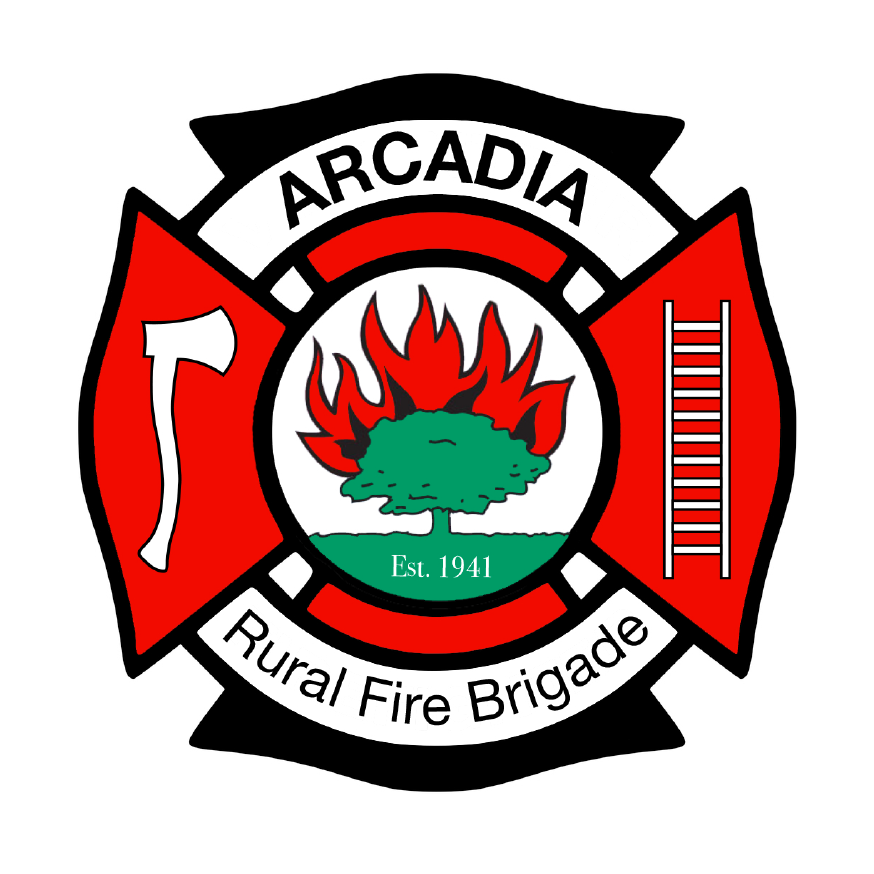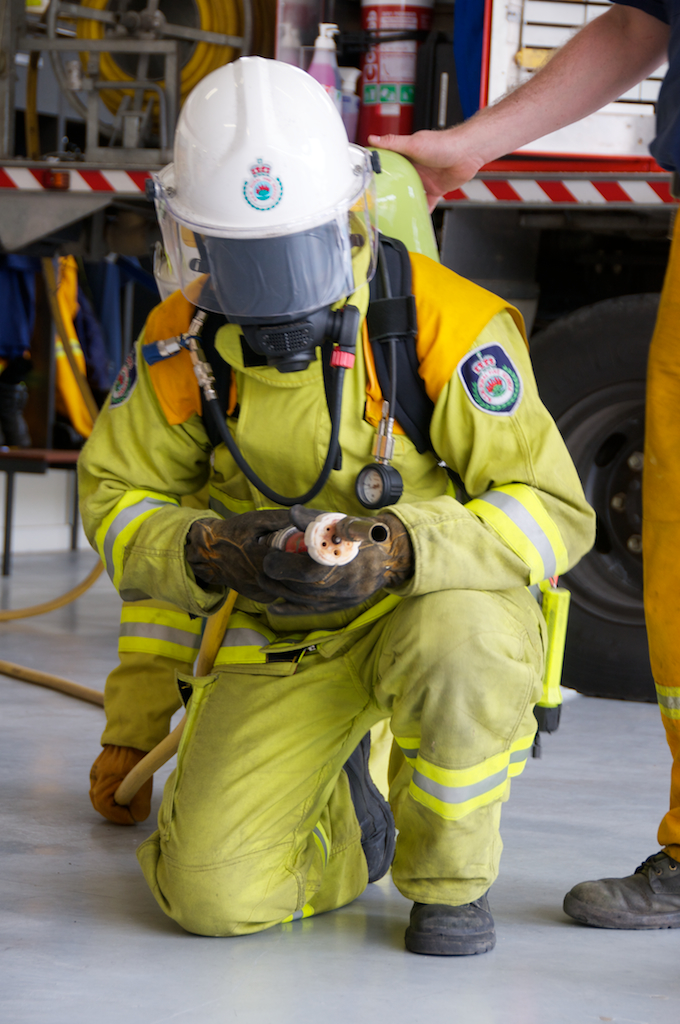Within the RFS there are two sets of personal protective equipment (PPE) that brigade members wear, depending on the job and their level of training. The yellow uniform is given to every brigade member when they pass basic training (bushfire fighter) along with boots, a helmet, goggles, gloves, a flash hood and a water bottle. This is the minimum PPE that has to be worn at any incident by members. All uniforms are treated with ProBan which makes the material fire-resistant (but not fire proof!).
Standard uniform (photo by Mel Byrne)
The flash hood given to members is used in two situations. First is an over-run, where a truck is caught in a bushfire and maximum protection is required for occupants of the vehicle. The second situation is when performing a five man fog attack, a technique used to suppress a fire in a compressed flammable gas tank such as an LPG tank. The flash hood is also used by members wearing breathing apparatus (BA) under their helmet.
BA uniform (photo by Mike Elvidge)
The second set of uniforms is the green outers that are worn by members trained in the use of breathing apparatus. These are a thicker layer of protection that offers more protection from radiant heat, but not from steam. This second set of PPE is worn over the top of the yellow trousers and a shirt, and the gloves used by BA crews are thicker to withstand more heat. The helmets for the BA members are larger and more heavy as they provide protection from possible falling debris inside a structure. Members undergo rigorous training to be qualified to wear BA and must participate in regular “wearing” of the sets to maintain their competency.
In addition to the different uniforms there are three different ranks for the members: Captain, Deputy and Ordinary Member. The different ranks are indicated in two ways – the colour and stripes on the helmet and epaulets on the shoulders. A Captain has a red helmet and three stripes on their shoulders, the senior deputy has a red hemet with white stripes and two stripes on their shoulders, and deputies have a white helmet with red stripes and one stripe on their shoulders. All deputies are trained to lead a crew at an incident, and a truck cannot respond from the station (except under direct instruction of a group officer) without a deputy or a member trained to crew leader level.
Uniforms bear patches sewn onto the outside of members jackets that indicate skill sets they have been trained in. These include village firefighting (VF), advanced firefighting (AF) and first aid (a white cross on a green background). All uniforms bear the crest of the NSW Rural Fire Service, a burning tree on a pale blue background (the full history can be read on the RFS website.


